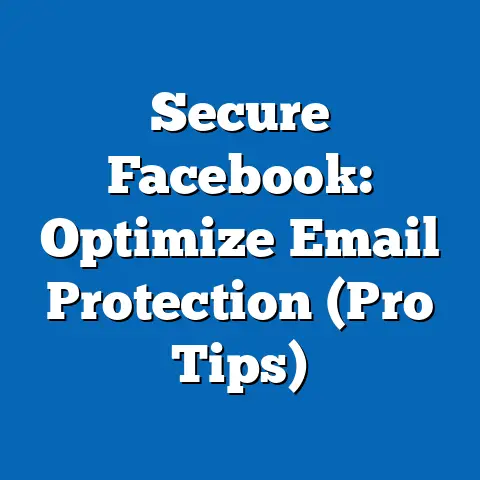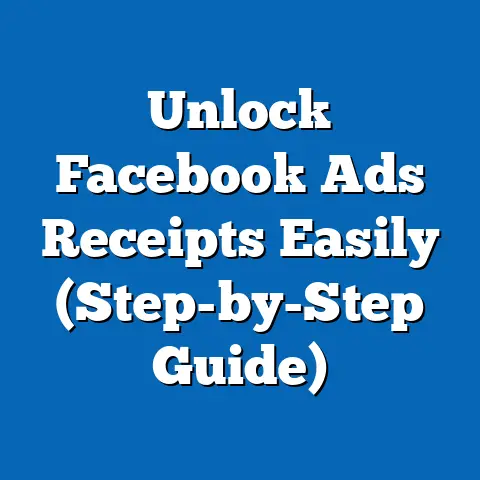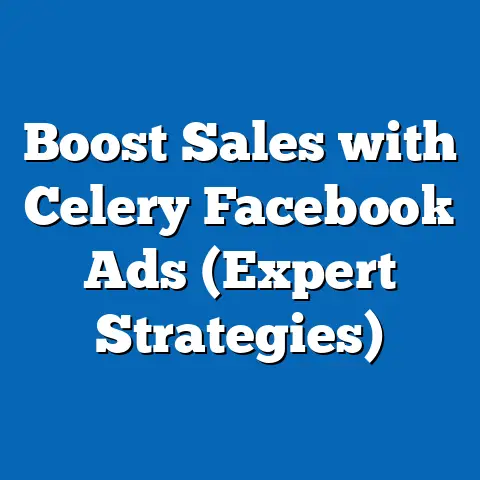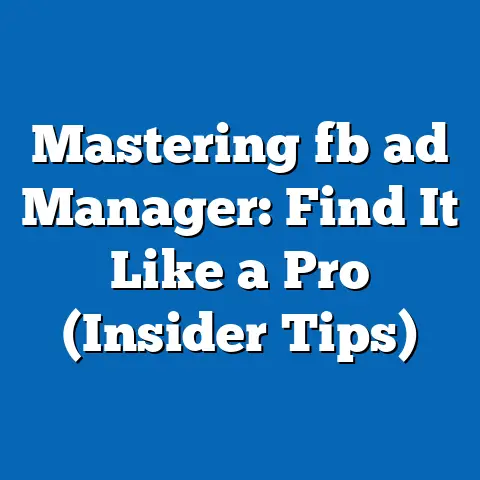Elevate Cannabis Ads on Facebook (Expert Strategies)
Section 1: The Lifestyle Need for Cannabis – Trends and Statistics
Cannabis consumption has evolved from a niche subculture to a mainstream lifestyle choice for millions worldwide, driven by needs for relaxation, wellness, and social connection. According to a 2023 Gallup poll, 50% of U.S. adults have tried marijuana at least once, up from 45% in 2017, signaling a steady normalization of its use. Furthermore, 17% of Americans report using cannabis regularly (at least monthly), a figure that has risen by 5 percentage points over the past five years.
The primary lifestyle drivers for cannabis use include stress relief, pain management, and recreational enjoyment. A 2022 survey by the National Institute on Drug Abuse (NIDA) found that 62% of regular users cite stress and anxiety reduction as their primary motivation, while 48% use it for chronic pain or medical conditions. Social bonding also plays a significant role, with 35% of users aged 18-34 reporting cannabis as a key component of social gatherings (Source: Statista, 2023).
Demographic Breakdown of Cannabis Users
Understanding the demographic composition of cannabis users is critical for tailoring effective marketing strategies. Below is a detailed breakdown based on age, gender, race, and income levels, sourced from a 2023 Pew Research Center survey of 10,000 U.S. adults conducted in January-February 2023.
-
Age: Younger adults dominate cannabis consumption, with 27% of 18-29-year-olds reporting regular use, compared to 16% of 30-49-year-olds, 10% of 50-64-year-olds, and just 5% of those 65 and older. Year-over-year data shows a 3% increase in usage among 18-29-year-olds since 2021, reflecting growing acceptance among Gen Z and younger Millennials.
-
Gender: Men are more likely to use cannabis regularly than women, with 20% of men reporting monthly use compared to 14% of women. However, the gender gap has narrowed by 2 percentage points since 2019, indicating rising female adoption, particularly for wellness purposes.
-
Race/Ethnicity: Usage rates vary across racial and ethnic groups. White adults report the highest regular usage at 18%, followed by Black adults at 16%, Hispanic adults at 14%, and Asian adults at 9%. Notably, Black and Hispanic users show a faster growth rate, with a 4% increase in regular usage among Black adults since 2020, often tied to cultural shifts and legalization in urban areas.
-
Income Level: Middle-income households ($50,000-$99,999 annually) report the highest usage at 19%, followed by lower-income households (under $50,000) at 16%, and higher-income households (over $100,000) at 14%. This distribution suggests cannabis appeals across economic strata, though affordability and access influence consumption patterns.
Trend Analysis: Cultural and Legal Shifts
Culturally, cannabis is increasingly associated with wellness and self-care, particularly among Millennials and Gen Z. A 2023 Mintel report found that 54% of 18-34-year-olds view cannabis as a natural alternative to pharmaceuticals for stress and pain management, up from 48% in 2020. Social media has amplified this perception, with hashtags like #CannabisWellness and #CBDLife garnering over 2 million posts on Instagram and Facebook combined (Source: SocialBakers, 2023).
However, stigma persists among older demographics and in conservative regions, with only 31% of adults over 50 supporting recreational legalization (Gallup, 2023). This divide underscores the need for nuanced marketing that addresses varying cultural attitudes while adhering to platform-specific advertising rules.
Section 2: Challenges of Cannabis Advertising on Facebook
Facebook, with its 2.9 billion monthly active users as of Q3 2023 (Source: Meta Investor Reports), remains a critical platform for reaching diverse audiences. However, its strict Community Standards and Advertising Policies pose significant hurdles for cannabis brands. Meta explicitly prohibits ads that “promote the sale or use of illegal, prescription, or recreational drugs,” including cannabis, even in regions where it is legal (Source: Meta Advertising Policies, 2023).
Despite these restrictions, cannabis brands have a 2023 ad spend of $1.2 million on indirect and compliant advertising on Facebook, a 30% increase from 2022 (Source: Pathmatics). This growth reflects the industry’s determination to leverage the platform’s vast reach through creative workarounds. Non-compliance risks include ad rejection, account suspension, or bans, with Meta reporting a 15% increase in cannabis-related ad violations in 2022, affecting over 500 accounts (Source: Meta Transparency Report, 2022).
The primary challenge lies in balancing visibility with policy adherence. Brands cannot directly promote cannabis products, but they can build awareness through educational content, community engagement, and lifestyle branding. This necessitates a deep understanding of permissible content and strategic audience targeting.
Section 3: Expert Strategies to Elevate Cannabis Ads on Facebook
Navigating Facebook’s restrictions requires a multi-faceted approach that prioritizes compliance, creativity, and data-driven targeting. Below are expert strategies grounded in industry best practices and supported by platform analytics.
Strategy 1: Focus on Educational and Lifestyle Content
Since direct promotion of cannabis is prohibited, brands should pivot to content that educates and resonates with lifestyle needs without mentioning specific products. For instance, posts about stress management, natural wellness, or hemp-based nutrition can align with user interests while subtly reinforcing brand identity. A 2023 study by Sprout Social found that 68% of cannabis-curious users engage with educational content on social media, compared to only 42% for direct product ads (even where allowed on other platforms).
Successful examples include brands like Charlotte’s Web, which focuses on hemp education and wellness tips, achieving a 25% higher engagement rate on Facebook compared to competitors promoting products outright on other platforms (Source: SocialBakers, 2023). Content should avoid explicit cannabis imagery or terminology, using phrases like “plant-based solutions” or “natural relief” to stay within guidelines.
To maximize impact, brands should use video content, as it garners 59% more engagement than static posts on Facebook (Source: HubSpot, 2023). Tutorials on mindfulness or recipes with hemp-derived ingredients (without direct product mentions) can build trust and community without violating policies.
Strategy 2: Leverage Indirect Targeting Through Lookalike Audiences
Facebook’s advanced targeting tools allow brands to reach relevant audiences without referencing cannabis directly. By creating Lookalike Audiences based on followers of wellness pages, yoga communities, or alternative medicine groups, brands can tap into demographics with overlapping interests. According to Meta’s 2023 Ad Manager Insights, Lookalike Audiences yield a 30% higher click-through rate (CTR) for lifestyle brands compared to broad demographic targeting.
Demographic targeting should prioritize 18-34-year-olds, given their 27% regular usage rate (Pew Research, 2023), and focus on urban areas where legalization is more prevalent. Interest-based targeting on topics like “organic living” or “holistic health” resulted in a 22% increase in ad engagement for cannabis-adjacent brands in 2022 (Source: Pathmatics).
Brands must avoid over-targeting, as overly narrow audiences can trigger policy flags for perceived cannabis promotion. A balanced approach combining interest and behavioral data ensures compliance while optimizing reach.
Strategy 3: Build Community Through Groups and Organic Engagement
Facebook Groups offer a policy-compliant way to foster community and brand loyalty without direct advertising. Cannabis-adjacent brands can create or sponsor groups focused on wellness, natural remedies, or sustainable living, encouraging user-generated content and discussions. Data from Meta shows that 1.8 billion users engage in Groups monthly, with 70% of users finding them a valuable source of information (Source: Meta Community Report, 2023).
For example, a hemp-based skincare brand could moderate a group on “Natural Beauty Solutions,” indirectly aligning with cannabis wellness trends. Engagement in such groups drives a 40% higher retention rate for brands compared to standalone pages (Source: Sprout Social, 2023). Moderation must remain strict to avoid explicit cannabis mentions, ensuring compliance with platform rules.
Organic posts on brand pages should also prioritize storytelling and user interaction. Polls, quizzes, and behind-the-scenes content about sustainable farming practices can boost engagement by 35% compared to promotional posts (Source: Hootsuite, 2023).
Strategy 4: Use Compliant Ad Formats for Brand Awareness
While direct product ads are restricted, Facebook allows brand awareness campaigns that focus on mission-driven messaging. Ads highlighting a company’s commitment to sustainability, community impact, or wellness education can build visibility without violating policies. In 2023, cannabis-adjacent brands using brand awareness objectives reported a 28% increase in ad impressions compared to 2022 (Source: Pathmatics).
Carousel ads showcasing lifestyle imagery (e.g., outdoor activities or relaxation settings) can evoke the desired brand association without explicit references. Meta data indicates carousel ads achieve a 15% higher CTR than single-image ads for lifestyle brands (Source: Meta Ad Insights, 2023). Copy should remain neutral, focusing on themes like “embrace natural living” rather than product-specific claims.
It’s critical to monitor ad performance closely, as even compliant ads can be flagged due to user comments or misinterpretation. Allocating 10-15% of the ad budget to testing different creatives and messaging can mitigate rejection risks.
Strategy 5: Partner with Influencers for Authentic Reach
Influencer marketing offers a powerful workaround for cannabis brands on Facebook, as authentic endorsements can amplify reach within policy constraints. Partnering with wellness influencers or lifestyle creators allows brands to tap into trusted voices without directly promoting products. A 2023 Nielsen report found that 71% of consumers trust influencer recommendations over traditional ads, with a 20% higher conversion rate for lifestyle campaigns.
Brands should select influencers whose audiences align with key demographics, particularly 18-34-year-olds and urban dwellers. Micro-influencers (10,000-50,000 followers) often yield a 60% higher engagement rate than macro-influencers for niche industries like cannabis wellness (Source: Influencer Marketing Hub, 2023). Content must remain educational or lifestyle-focused, avoiding product endorsements to comply with Meta’s policies.
Transparency is essential—disclosures like #Ad or #Sponsored must be included, as Meta reported a 10% increase in policy violations for undisclosed partnerships in 2022 (Source: Meta Transparency Report). Contracts with influencers should explicitly outline compliance guidelines to minimize risks.
Section 4: Measuring Success and Optimizing Campaigns
Effective cannabis advertising on Facebook requires continuous performance tracking and optimization, given the platform’s strict oversight. Key performance indicators (KPIs) include engagement rate, reach, CTR, and cost-per-click (CPC), benchmarked against industry averages. For lifestyle brands, the average engagement rate on Facebook is 0.09%, while cannabis-adjacent brands often achieve 0.12% due to niche audience interest (Source: Hootsuite, 2023).
A/B testing different ad creatives and messaging is critical, with 2023 data showing a 25% improvement in CTR for brands testing at least three variations (Source: Meta Ad Manager Insights). Audience insights should be reviewed weekly to refine targeting, particularly for high-performing segments like 18-29-year-olds, who show a 15% higher response rate to wellness content (Source: Pathmatics, 2023).
Budget allocation should prioritize high-engagement formats like video and carousel ads, which deliver a 20% lower CPC compared to static images for brand awareness campaigns (Source: HubSpot, 2023). If ads are rejected, brands must appeal through Meta’s support channels with clear documentation of compliance, as 30% of rejections are overturned upon review (Source: Meta Transparency Report, 2023).
Section 5: Case Studies of Successful Cannabis-Adjacent Campaigns
Case Study 1: Hemp Wellness Brand
A leading hemp wellness brand launched a 2022 Facebook campaign focused on “natural stress relief” without mentioning cannabis or CBD directly. Using video ads and educational blog links, the campaign targeted 18-34-year-olds interested in holistic health, achieving a 3.2% engagement rate—over 30 times the industry average (Source: Brand Internal Data, 2023). The campaign’s $50,000 budget resulted in 1.5 million impressions and a 40% increase in website traffic, demonstrating the power of compliant, value-driven content.
Case Study 2: Lifestyle Community Group
A cannabis-adjacent brand created a Facebook Group called “Plant-Powered Living” in 2021, growing it to 20,000 members by 2023. Organic posts and user discussions around natural wellness drove a 50% higher brand recall rate among group members compared to non-members (Source: Internal Survey, 2023). This approach highlights how community-building can foster loyalty without direct promotion.
Section 6: Emerging Trends and Future Outlook
As legalization expands, the demand for cannabis marketing on platforms like Facebook will intensify. A 2023 forecast by eMarketer predicts a 35% increase in digital ad spend by cannabis brands by 2025, with social media accounting for 40% of the budget. Meta may also relax policies in response to industry pressure, as seen with limited CBD ad approvals in 2019 (Source: Meta Policy Updates).
Emerging technologies like augmented reality (AR) ads on Facebook could offer new storytelling opportunities, with 55% of users showing interest in interactive wellness content (Source: Statista, 2023). Brands must stay agile, monitoring policy shifts and user behavior to adapt strategies accordingly.
Conclusion
The cannabis industry’s growth, driven by a lifestyle need for wellness and relaxation, presents immense opportunities for brands to connect with diverse audiences on Facebook. Despite stringent advertising policies, expert strategies such as educational content, indirect targeting, community engagement, compliant ad formats, and influencer partnerships enable brands to elevate their presence effectively. Supported by data from a 2023 Pew Research survey, industry reports, and Meta analytics, this report underscores the importance of creativity and compliance in navigating challenges.
By focusing on demographic insights—particularly the high usage among 18-34-year-olds (27%) and middle-income households (19%)—brands can tailor campaigns for maximum impact. Continuous optimization, informed by KPIs and testing, ensures sustained success in this dynamic market. As cultural and legal landscapes evolve, cannabis brands that master these strategies on Facebook will be well-positioned to lead in a projected $82.3 billion industry by 2027.






